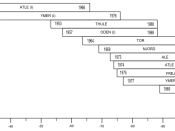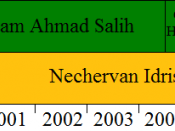Role of Organizing in Critical Thinking
It is possible that a process drives critical thinking more fundamental than natural order. We are dealing here with that perennial question with which each generation pesters the previous one: "What came first, the chicken or the egg?" A persistent child can drive far beyond the answer "Ask your mother" forcing one to explain, why there is no correct answer. How we chose to answer will deal with the way we organize our thoughts.
Nature and mental orders
Natural order can be broken down into four groupings, topical, analogical, chronological and causal. Topical order is when most things fall into a natural order. Salmon swim upstream to span. Analogical order is when things are grouped by similarities. Between a light bulb and a candle. Chronological order takes place through time. Putting on your shoes then tying the laces. Causal order is when our brain looks for causes and effects.
We hear a tire squelch and look for the car that made the noise.
Steps in organizing
When the brain needs to organize the data it has gathered, it goes through a three-step process to make sense of the information, cluster, analyze and prioritize. When we cluster, we are grouping items by similarities and by what naturally seems to belong together. After the items are grouped, these clusters are analyzed to see if the items are grouped the way they should be, in the proper order, if information should be added or deleted. The last step is to prioritize the analyzed clusters. This is like the outline of a paper.
Using orders
When we want to tell a story about what happened, we usually use chronological order. The use of chronological order is probably the most used order. We use it to set...


